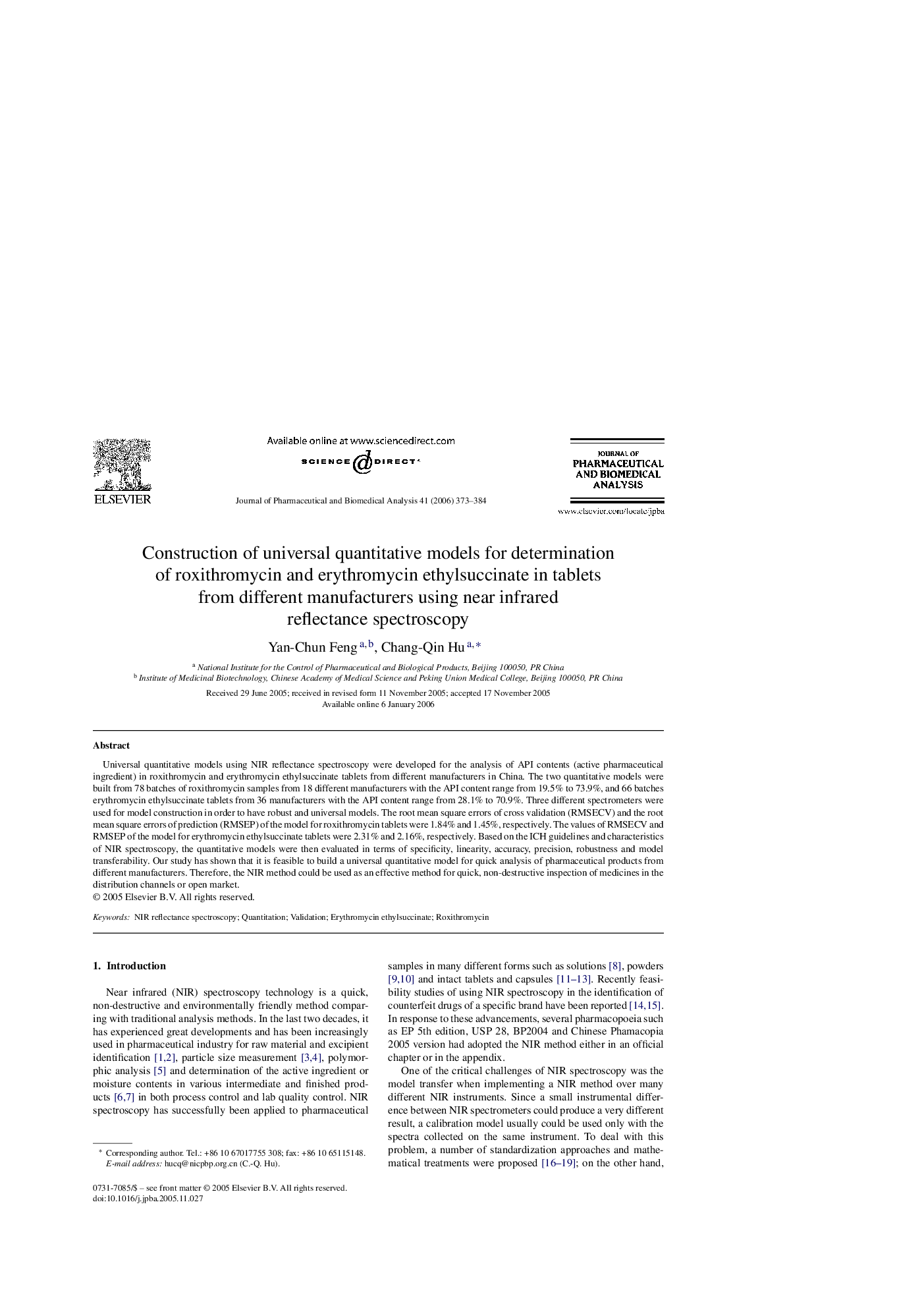| Article ID | Journal | Published Year | Pages | File Type |
|---|---|---|---|---|
| 1224996 | Journal of Pharmaceutical and Biomedical Analysis | 2006 | 12 Pages |
Universal quantitative models using NIR reflectance spectroscopy were developed for the analysis of API contents (active pharmaceutical ingredient) in roxithromycin and erythromycin ethylsuccinate tablets from different manufacturers in China. The two quantitative models were built from 78 batches of roxithromycin samples from 18 different manufacturers with the API content range from 19.5% to 73.9%, and 66 batches erythromycin ethylsuccinate tablets from 36 manufacturers with the API content range from 28.1% to 70.9%. Three different spectrometers were used for model construction in order to have robust and universal models. The root mean square errors of cross validation (RMSECV) and the root mean square errors of prediction (RMSEP) of the model for roxithromycin tablets were 1.84% and 1.45%, respectively. The values of RMSECV and RMSEP of the model for erythromycin ethylsuccinate tablets were 2.31% and 2.16%, respectively. Based on the ICH guidelines and characteristics of NIR spectroscopy, the quantitative models were then evaluated in terms of specificity, linearity, accuracy, precision, robustness and model transferability. Our study has shown that it is feasible to build a universal quantitative model for quick analysis of pharmaceutical products from different manufacturers. Therefore, the NIR method could be used as an effective method for quick, non-destructive inspection of medicines in the distribution channels or open market.
